Can You Remote Start a Manual Transmission Car or Stick Shift Automobile?
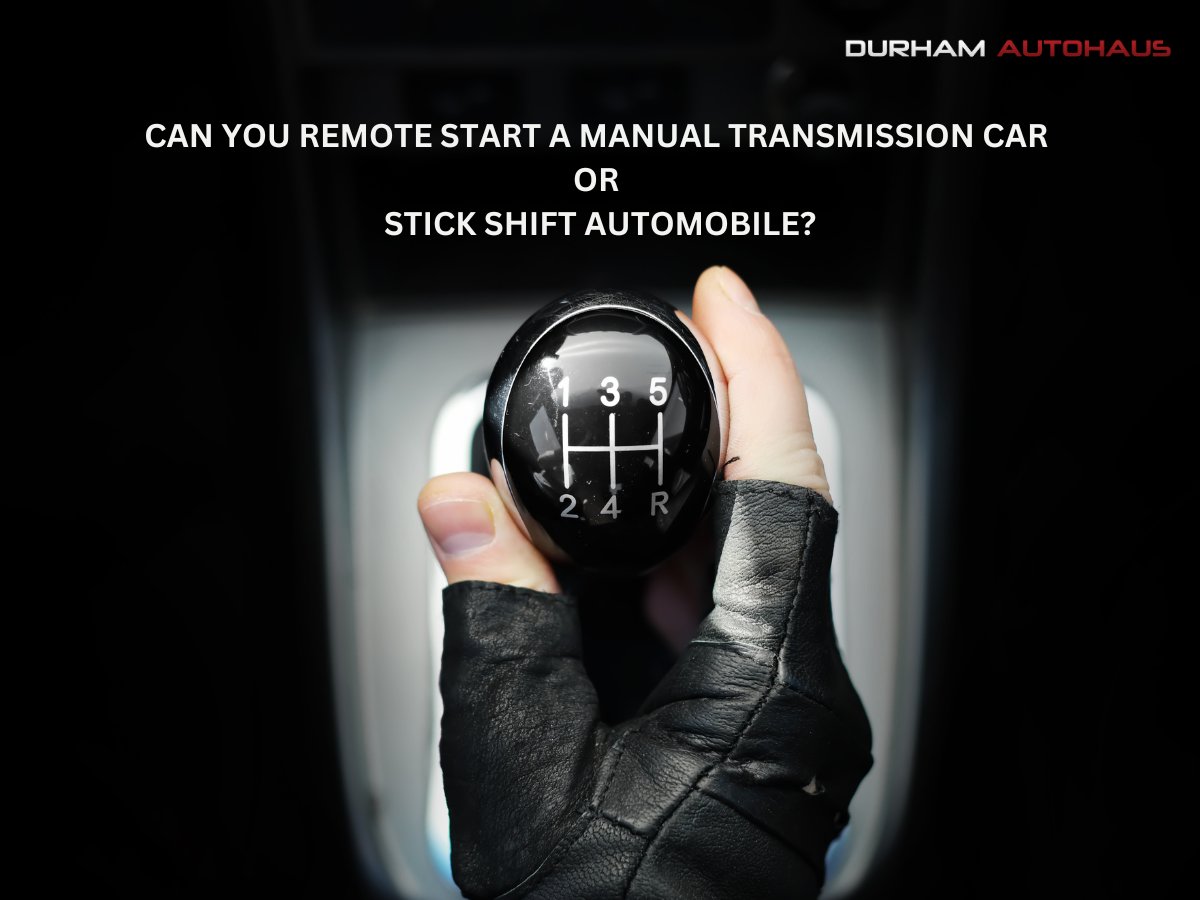
Table of Contents
Can you put a remote starter on a manual car is a question people frequently ask us. If you are here, you’re also one of those who is seeking expert opinions on whether remote starters are compatible and safe for a manual transmission (stick shift) vehicle. Installing a remote car has become a must-have for people because of its comfort and convenience. The majority of automated transmission riders have installed remote starters and are enjoying its perks and security enhancement. But, in the case of manual transmission cars, even though the installation is possible, the process is quite intricate, and there are certain factors you must consider. So, let’s go ahead and gain a clear understanding of what installing a remote starter on a manual transmission car entails.
Understanding How Remote Start System Works
For the vehicle owner’s end, once the remote starter is installed, it operates with a push of a button. But in actuality, the installation process and what goes inside the vehicle is an elaborate process that involves connecting wires to your vehicle to ignite the engine so that you can start your vehicle remotely.
Remote start systems operate through an electronic module integrated into the vehicle. This module communicates with a remote control, a dedicated remote control device, or a smartphone app. The secure authentication is used to prevent unauthorized use. The module is intricately connected to the vehicle’s electronics. It allows the vehicle to start the engine remotely while maintaining security measures. Safety features such as automatic shut-off and integration with climate control enhance the overall functionality, providing users with convenience and peace of mind. Then, can you put a remote starter on a manual car?
Making Manual Transmission Cars Remote Start-Ready
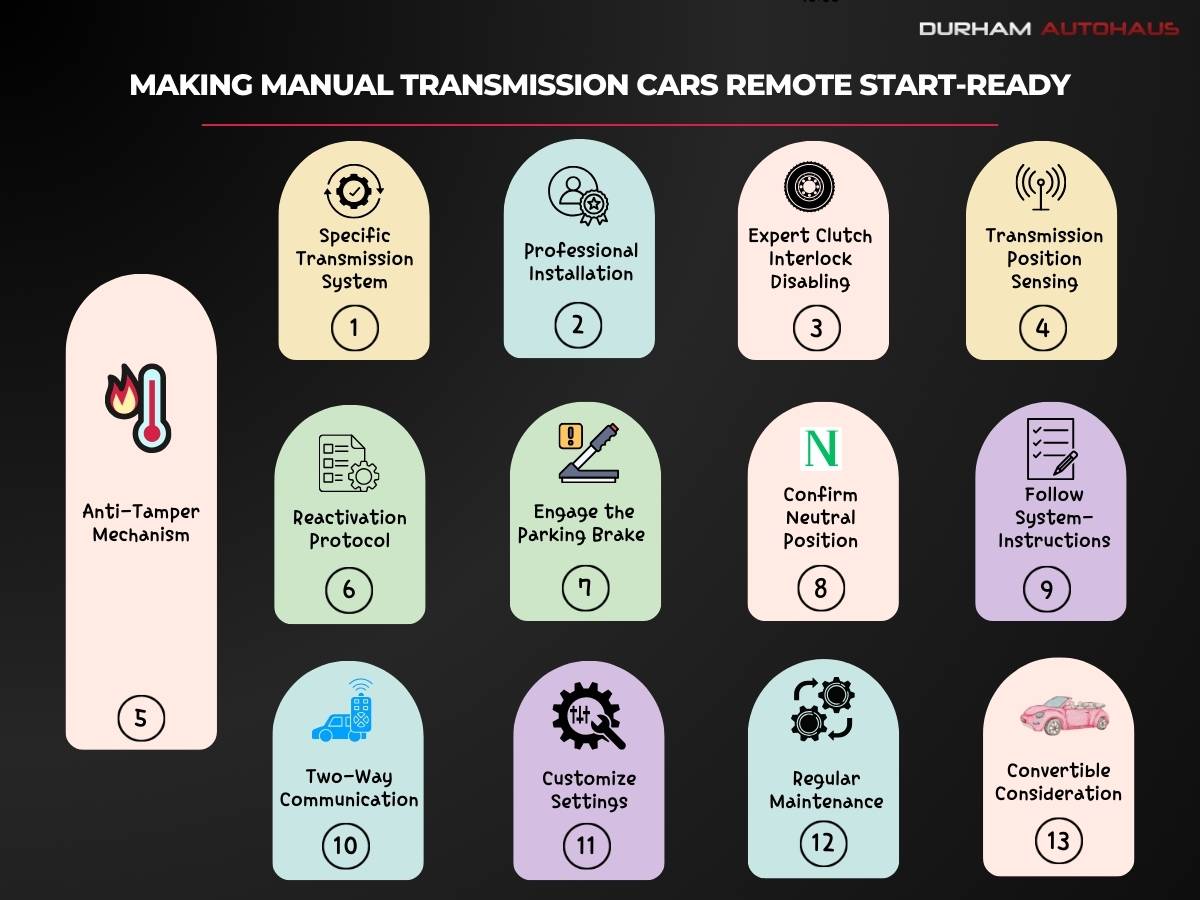
Remote starting a manual transmission car involves overcoming unique challenges compared to automatic transmissions. If so, then can you remote start a manual transmission car? Yes, but it requires careful consideration of safety precautions to prevent unintended movement and ensure the vehicle is in a safe starting condition. We’ve mentioned some key aspects you must adhere to to ensure the remote starter on a manual transmission system is installed correctly.
1. Choose a Manual Transmission-Specific System
Invest in a remote start system designed explicitly for manual transmissions. These systems are equipped with features to address safety concerns associated with manual cars, such as ensuring the clutch is engaged and confirming the neutral position.
2. Professional Installation
Consider having the remote start system professionally installed. Certified installers have the expertise to integrate the system seamlessly, reducing the risk of errors and ensuring safety features are properly configured.
3. Expert Clutch Interlock Disabling
A proficient technician can effectively disable the clutch interlock by integrating the remote starter with the clutch interlock system. This smart setup eliminates the necessity of depressing the clutch pedal to disable the interlock. Consequently, pressing the start button on your remote car starter will automatically deactivate the interlock before initiating the starter.
4. Transmission Position Sensing
The remote starter can be configured to interact with the door switches to minimize the risk of starting the vehicle in gear. This adjustment alters your car’s shutdown process. When parking the vehicle, shift to neutral and engage the parking brake. Then, turn off the ignition and remove the keys. The engine will persist until you exit the vehicle and close the door.
5. Anti-Tamper Mechanism
The system incorporates an anti-tamper feature. If someone opens the car door before you initiate the car again, the remote starter remains inactive. This safety measure ensures that no one inadvertently shifts the car back into gear before using the automatic starter. This feature may restrict leaving windows open for added security.
6. Reactivation Protocol
When the anti-tamper mechanism is triggered, a reactivation protocol is required. It includes shifting the car into neutral and activating the emergency brake. Afterward, turn off the car, exit, and close the door. Doing so prevents the unauthorized use or tampering with the vehicle’s ignition system which strengthens the security and safety of the vehicle.
7. Engage the Parking Brake
Before activating the remote start, ensure the parking brake is engaged. It prevents unintended movement, especially if the system requires the parking brake to be engaged for remote start functionality.
8. Confirm Neutral Position
Ensure the manual transmission is in the neutral position. Preventing the vehicle from moving unexpectedly when the engine starts is crucial.
9. Follow System-Specific Instructions
Stick to the manufacturer’s instructions provided with your remote start system. Different systems may have specific requirements or steps to ensure safe and proper operation.
10. Two-Way Communication
If your system provides two-way communication, use it to confirm the car’s status. Some systems offer feedback, notifying you of a successful remote start and ensuring additional safety.
11. Customize Settings
If your remote start system allows customization, consider adjusting settings according to your preferences. It may include features like runtime, temperature control, or additional safety measures.
12. Regular Maintenance
Keep your vehicle in good condition with regular maintenance checks. Ensure the clutch and other critical components are in optimal condition to prevent premature wear and mechanical failures.
13. Convertible Consideration
It’s essential to note that the multi-step solution may not be applicable for convertibles. Convertible vehicles may require alternative safety measures or considerations due to their unique design and functionality.
Types of Remote Start Systems Available in the Market
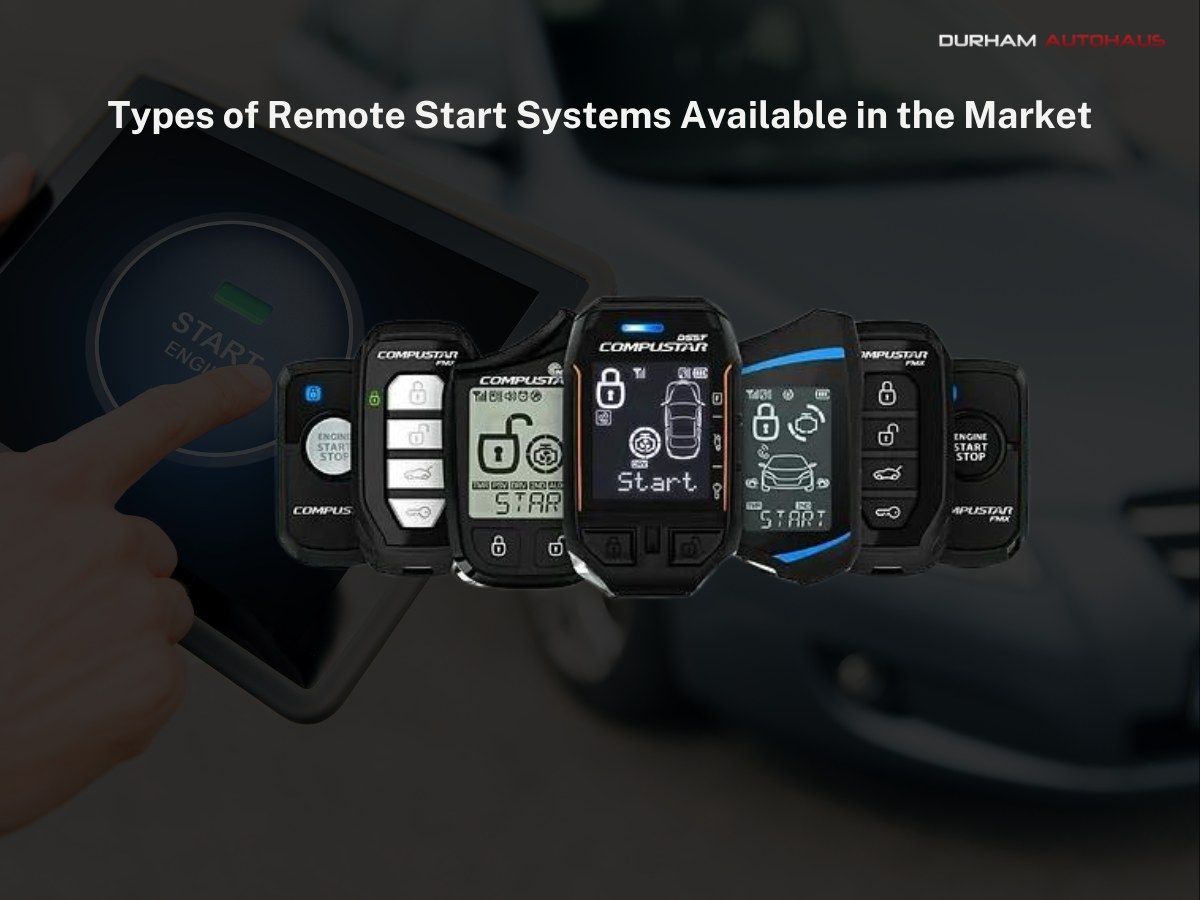
The market offers various remote start systems, each serving different user preferences and vehicle requirements. Understanding the options available can help consumers make informed choices: Let’s explore available remote starter systems:
1. Traditional Remote Start Systems
Basic systems that provide remote engine start functionality.
Usually, it comes with a dedicated remote control device.
2. Smartphone App-Controlled Systems
Enable users to start their vehicles using a smartphone app.
Often offer additional features like GPS tracking, vehicle status, and more.
3. Key Fob Integrated Systems
The remote start system is integrated into the vehicle’s key fob.
Allows users to start the engine by pushing a button on the key fob.
4. Two-Way Communication Systems
Provide feedback to the user about the vehicle’s status.
Confirmations or alerts are returned to the remote control device, ensuring peace of mind.
5. Advanced Climate Control Systems
Integration with the vehicle’s climate control for adjusting temperature remotely.
Ideal for regions with extreme temperatures.
6. Original Equipment Manufacturers (OEMs)
Vehicle manufacturers offer installed remote start systems within their vehicles.
Seamlessly integrated into the vehicle’s design and electronics.
Remote Starting Manuals: The Challenge
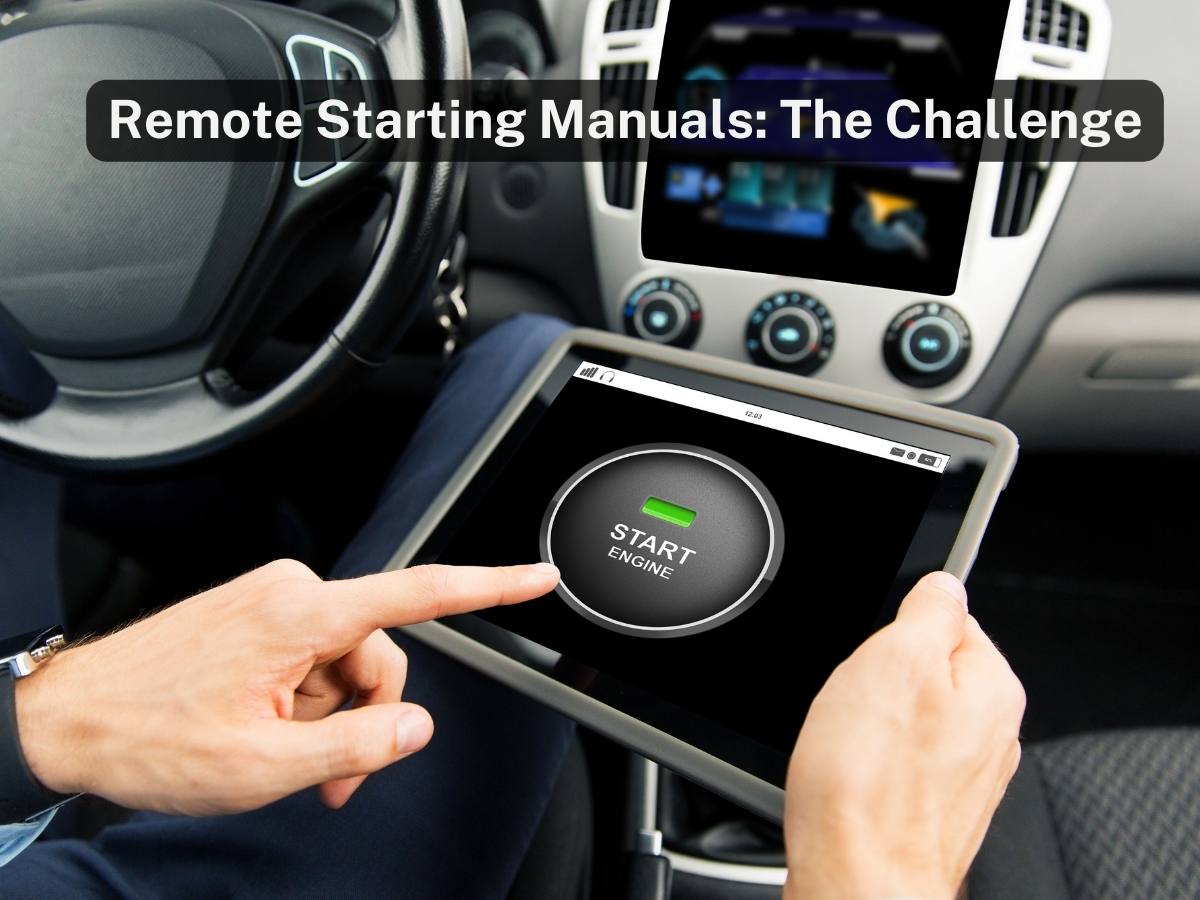
Manual-transmission vehicles use mechanical shift linkage systems to ignite and move the vehicle. Because these vehicles lack wired sensors, the question of whether you can have a remote start on a manual car is obvious. Because the manual transmissions require the driver to engage the clutch before starting the engine, the manual intervention complicates the conventional remote start process.
1. Clutch Engagement Complexity
Manual transmission cars must engage the driver’s clutch before starting the engine. Incorporating this process into a remote starting system adds complexity, as the system must replicate the precise coordination involved in manually depressing the clutch pedal.
2. Neutral Gear Requirement
To start a manual transmission car safely, it must be in neutral gear. Ensuring that the vehicle is in the correct gear remotely becomes a challenge, as there is no direct physical control over the transmission system.
3. Anti-Theft Measures
Manual transmission cars often have built-in anti-theft measures that require the driver’s physical presence and engagement with the vehicle’s controls. Implementing remote starting without compromising these security features is a critical concern.
The Safety Concerns and Potential Risks Involved
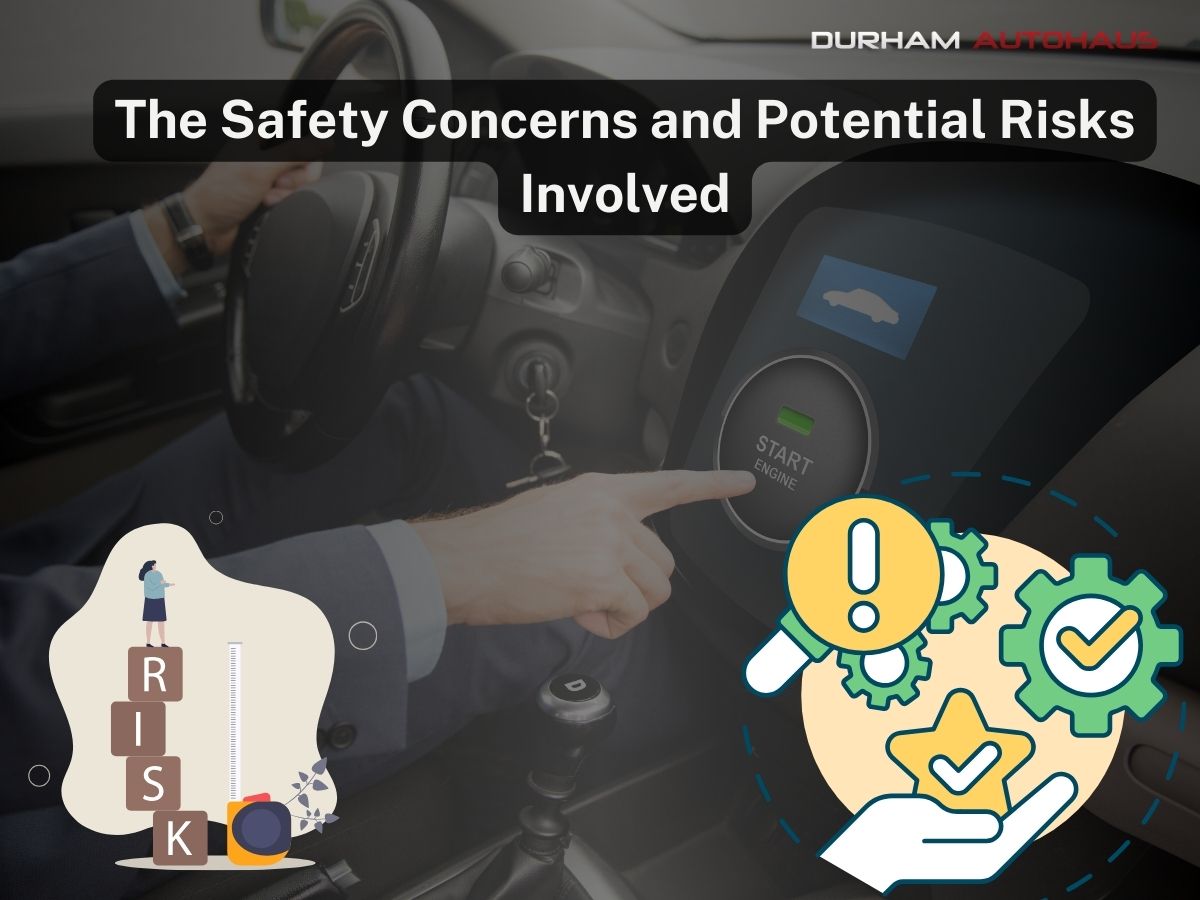
Remote starting of manual transmission cars poses safety concerns. This is due to the risk of unintended movement if the system fails to engage the clutch accurately. Incomplete clutch engagement can lead to premature wear, compromising vehicle performance and safety. It minimizes the risk of the vehicle moving unexpectedly and ensures a safer remote start.
Unauthorized use is also a worry, as weak security may allow starting without the owner’s consent, raising theft concerns. Additionally, system malfunctions are potential issues, posing risks such as starting the vehicle in unsafe conditions or causing electrical problems. Addressing these challenges requires a detailed approach to ensure the seamless integration of remote starting systems without compromising the safety and reliability of manual transmission vehicles.
Tips for Ensuring the Car is in a Safe Condition Before Activating Remote Start
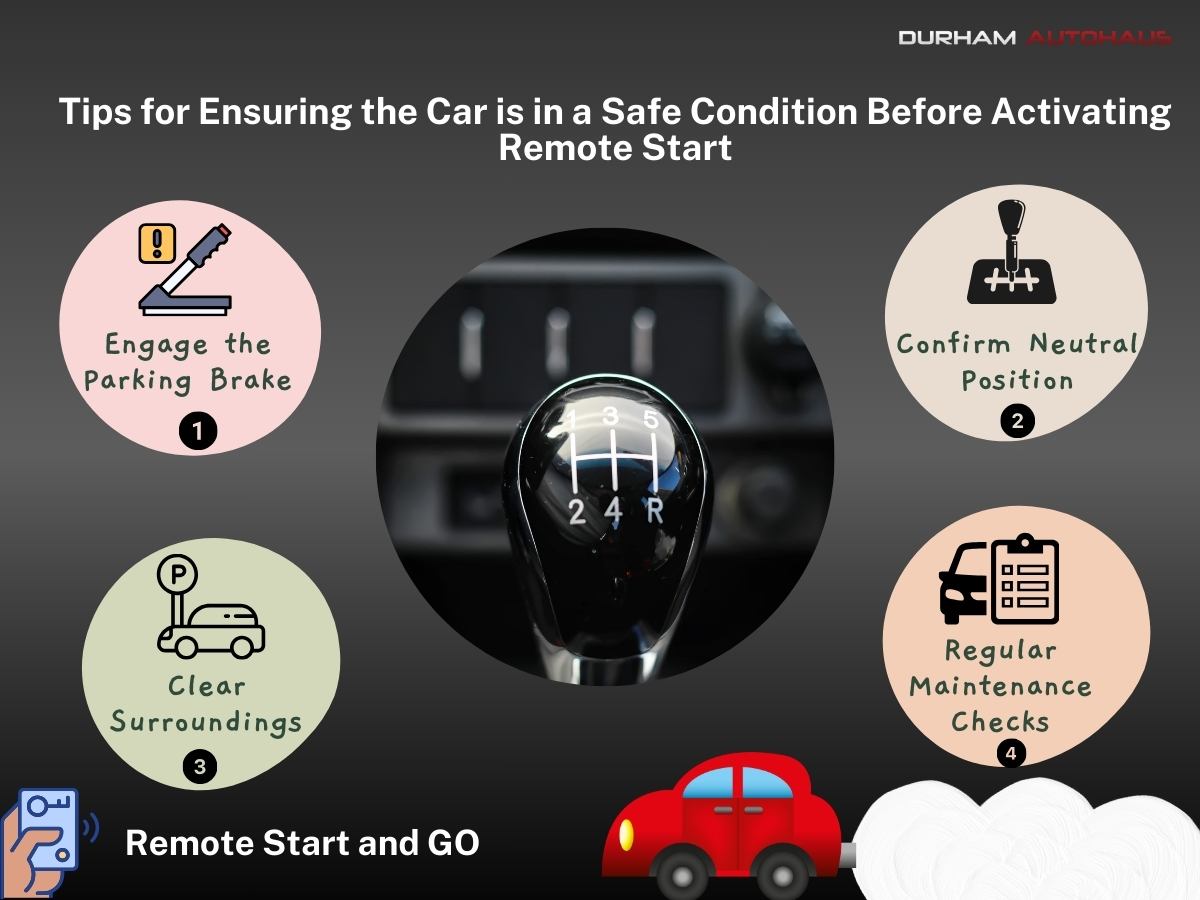
As the convenience of remote start systems becomes increasingly popular, ensuring your car is in a safe condition before activating this feature is paramount. Implementing a few key tips can enhance the efficiency of your remote start experience and contribute to your vehicle’s overall safety. In detail:
Engage the Parking Brake: Always ensure the brake is engaged before the remote starts. It helps prevent unintended movement and enhances overall safety.
Confirm Neutral Position: Verify that the manual transmission is neutral. It minimizes the risk of the vehicle moving unexpectedly. Additionally, it also ensures a safer remote start.
Clear Surroundings: Make sure the area around the vehicle is clear. There must not be obstacles and pedestrians. It helps to reduce the risk of accidents during remote start.
Regular Maintenance Checks: Maintain the vehicle in good condition with regular inspections. It includes checking the clutch, brakes, and other critical components to prevent mechanical failures.
Conclusion
All in all, installing a remote starter in a manual car can be done although it has its intricacies and challenges because it involves a clutch for ignition. Advanced remote starters compatible with manual-transmission vehicles and in the hands of a skilled remote starter technician can overcome these hurdles and install the remote starter in a manual car. Durham Autohaus has a decade of experience installing remote starters in manual and automatic transmissions in all make and model vehicles. Our experts understand the unique demands of manual transmissions and are experts at installing the remote starter for it to operate with perfection. Hire Durham Autohaus to make your daily commute in your manual car comfortable.
